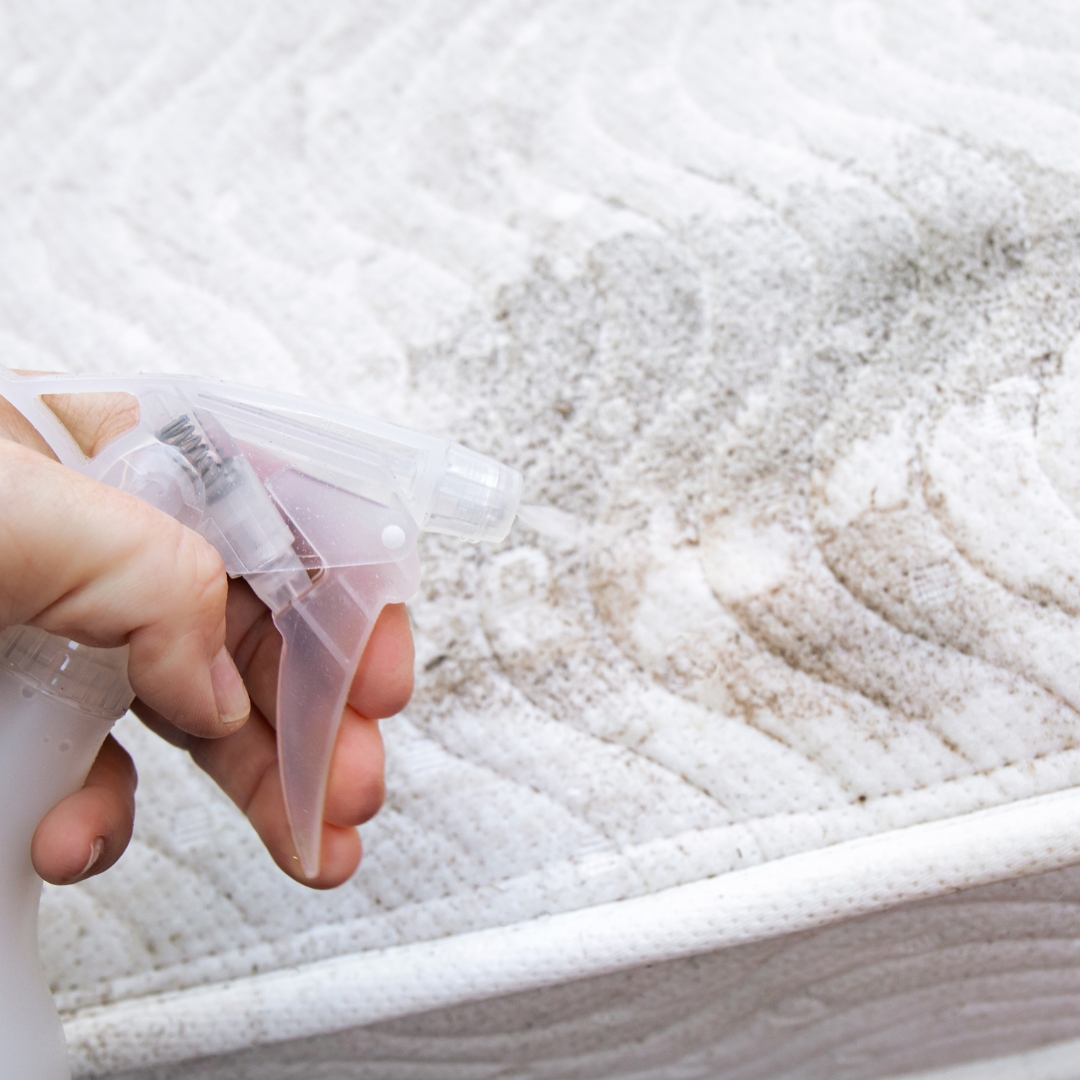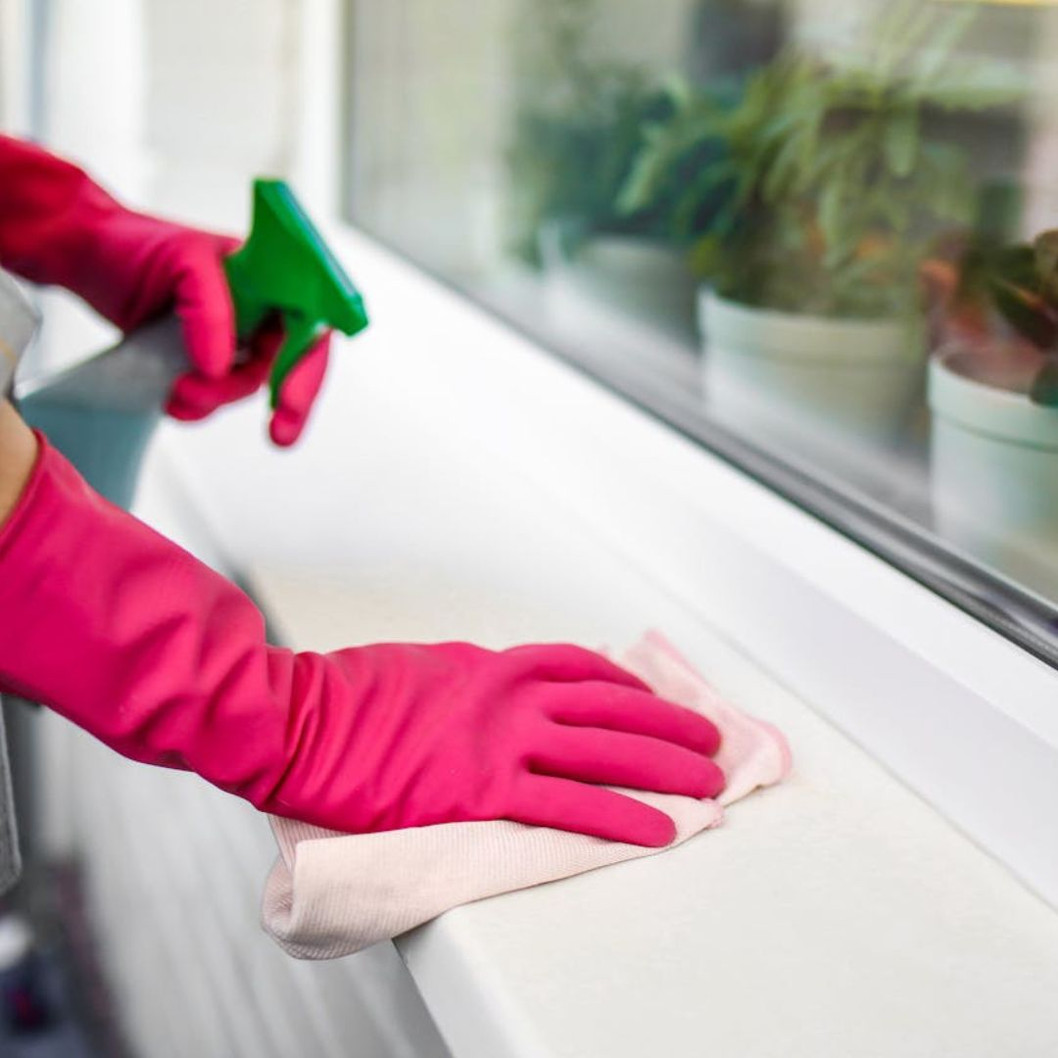Windows in older homes often get covered in condensation during cooler months, leading to damp curtains that can develop unsightly mould. If you're facing this issue or discovering mould on your outdoor cushions left out too long, we have a solution.
Our comprehensive guide offers tips on removing mould from fabrics like curtains, cushions and tablecloths. If these methods fail, explore our collection at The Mill Shop for replacements.
However, with our easy-to-follow tips, you can save your favourite fabrics from ruin. Learn to identify mould types, understand their impact on fabrics, and follow pretreatment steps before cleaning. Our guide includes practical methods using household products like vinegar and baking soda, ensuring thorough cleansing without damage.
Get ready to refresh your fabrics and tackle this pesky problem head-on.
Table Of Contents
- Understanding mould and its effects on fabric
- Pretreatment steps for removing mould from fabric
- Effective mould removal techniques
- Special considerations for delicate fabrics
- Preventing future mould growth on fabrics
- Maintaining low humidity levels
- Proper storage solutions
- Post-cleaning care and maintenance
Understanding mould and its effects on fabric
Before diving into the removal process, it's essential to understand what mould is and why it thrives on fabric. Mould is a type of fungus that grows in damp and humid environments, making fabrics susceptible to its growth, especially if they're stored in dark, moist areas.
Mould stains fabric and can also cause health issues if left untreated. Therefore, it's crucial to tackle mould growth as soon as you notice it. While black mould boasts a sinister shade, mildew leaves powdery white patches. Knowing which foe you face is the first step in protecting your cherished items.
Fabric quality takes a hit when mould makes itself at home. Not only does it weaken fibres which can lead to tears, but it also leaves behind discolouration that's tough to remove.
Beyond aesthetics, the presence of mould spores poses health risks too. They're airborne troublemakers looking for places to land and grow. Acting fast against this fungal invasion preserves both the life of our fabrics and our wellbeing by preventing further spread within our homes.

Pretreatment steps for removing mould from fabric
Before you wage a war on mould, your fabric needs a little TLC. First off, give the care label a once over to avoid any washday woes.
Safety first. Donning eye protection might make you feel like a mad scientist but it'll keep those pesky spores out of your eyes. And while we're suiting up, consider wearing gloves too - mould doesn't play nice with skin.
A quick spot test in an inconspicuous area will tell if your fabric is going to throw a tantrum or not when treated.
Effective mould removal techniques
If you've spotted that pesky mould making itself at home on your favourite fabric, fear not. Hot water and a robust liquid laundry detergent might just be your knight in shining armour. In the battle against stubborn mildew marks, this potent pair is remarkably effective.
For those tougher spots, make sure to follow our step-by-step guide:
- Before starting the removal process, ensure proper ventilation in the area and wear protective gloves and a mask to avoid direct contact with mould spores.
- Use a soft brush or sponge to gently brush off any visible mould growth on the fabric. Be careful not to spread the mould spores further.
- If possible, take the fabric outside and expose it to direct sunlight. Sunlight has natural disinfectant properties and can help kill mould spores. However, avoid prolonged exposure to sunlight as it may cause fading of coloured fabrics.
- Mix equal parts of white vinegar and water in a spray bottle. Spray the affected areas of the fabric generously with the vinegar solution. Vinegar is a natural mould killer and helps to loosen mould from the fabric fibres.
- For stubborn mould stains, create a paste by mixing baking soda with a small amount of water. Apply the paste directly to the stained areas and let it sit for about 30 minutes. Then, gently scrub the paste with a soft brush or sponge and rinse thoroughly.
- Mix one part hydrogen peroxide with two parts water in a spray bottle. Test the solution on a small, inconspicuous area of the fabric to ensure it doesn't cause any damage. Then, spray the solution onto the mouldy areas and let it sit for 10-15 minutes before rinsing.
- Dampen a clean cloth with rubbing alcohol and gently dab the mouldy areas of the fabric. Rubbing alcohol is effective in killing mould spores and disinfecting the fabric.
- After treating the fabric with the above methods, launder it as usual using a mild detergent. Wash the fabric in the hottest water temperature recommended for the fabric type.
- Once laundered, air dry the fabric in direct sunlight if possible. Ensure that the fabric is completely dry before storing it to prevent mould growth in the future.
Special considerations for delicate fabrics
Delicate fabrics often throw a spanner in the works when it comes to removing mould. But fear not, distilled white vinegar is here to save the day without wreaking havoc on your sensitive materials. This miracle fluid, celebrated for its slight tartness, deftly eradicates mould spores, all the while safeguarding the delicate threads of your fabric.
To start, mix equal parts of water and distilled white vinegar. Then dab this solution onto the affected area with care. Think of it as giving your fabric a tender hug rather than an aggressive shake. After treatment, wash your garment in warm water. Remember that hot temperatures can be harsh on some fabrics so stick to warm or even cold if you're dealing with very fragile items like silk or fine lace.
This method is particularly effective on white cottons where discolouration from mould is more noticeable - but always remember to spot test first. Aiming for renewal, we seek to avoid any unintended harm in the process.

Preventing future mould growth on fabrics
Maintaining low humidity levels
Fighting off those annoying mould spores demands mastering the art of indoor humidity regulation. It's like telling mould, "You're not welcome here." Aim for a humidity level below 60%. Sometimes, it means running a dehumidifier in damp areas or simply opening windows to let fresh air circulate.
Proper storage solutions
Storing fabrics correctly goes a long way in preventing future mould growth. Before storing clothes or curtains, make sure they're completely dry and consider adding silica gel packets to absorb any excess moisture.
Vacuum-sealed bags aren't just for saving space - they're also great at keeping mould out. And remember, maintaining a dry environment or controlling humidity levels in storage areas can further deter mould growth on items not stored in vacuum-sealed bags.
Post-cleaning care and maintenance
To maintain your fabrics' quality, it's crucial to give them some post-cleaning attention. Using high temperatures is vital at this stage.
Start by washing your freshly-cleaned items again to make sure any remaining spores are removed. Opt for the hottest water suitable for your fabric to eliminate any persistent mould spores that might have survived the first wash.
Lastly, remember that drying is just as important as cleaning for preserving your textiles.
View our range of home decor accessories



